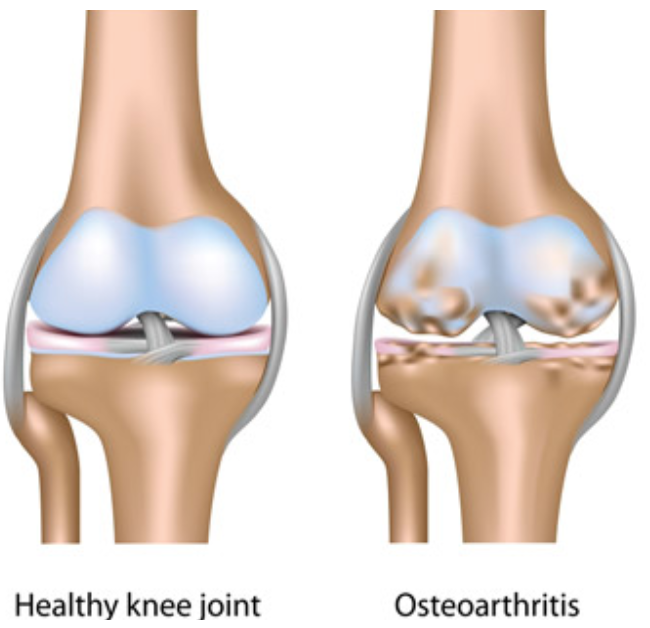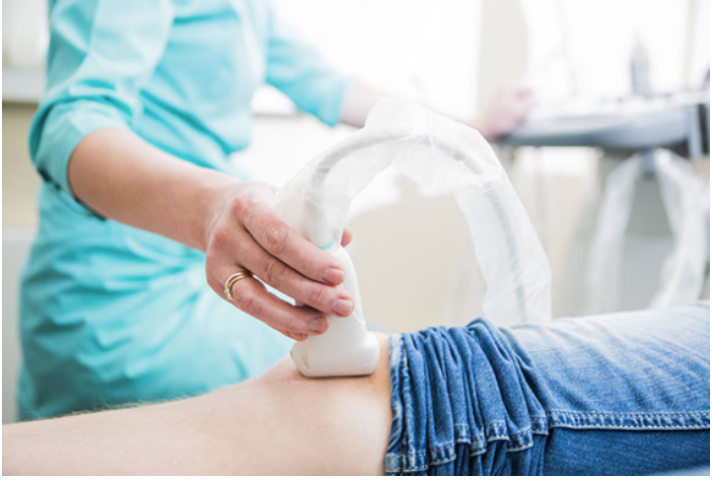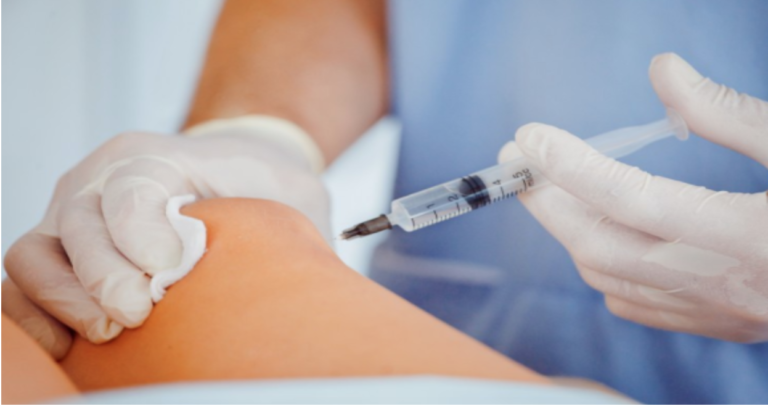Viscosupplementation for arthrits
Viscosupplementation for arthritis
Viscosupplementation/ Hyaluronic Acid Injections for OA
What is osteoarthritis to the joints?
Globally, osteoarthritis (OA) is the most prevalent form of arthritis among the elderly and the leading cause of disability. This degenerative joint disease has the potential to result in joint dysfunction and the depletion of synovial fluid, which is responsible for lubricating the joint and supplying it with its elastic shock-absorbing properties. Natural to synovial fluid is a vital component known as hyaluronic acid. A natural biopeptide, hyaluronic acid is abundant in healthy joints but depleted in those with osteoarthritis. In osteoarthritic knees, hips, or shoulders, joint movement coupled with inadequate joint lubrication can cause increased inflammation and wear and strain, ultimately resulting in cartilage deterioration. Osteoarthritis may be influenced by the following variables: age, sex, genetics, obesity, prior joint injury or damage, and excessive joint usage. Joint OA is characterized by joint rigidity, pain, and tenderness, as well as loss of flexibility that impairs mobility, diminishes quality of life, and potentially results in disability.

What is viscosupplementation?
Viscosupplementation is a non-pharmacological approach employed to mitigate pain and preserve joint mobility. It involves the application of a hyaluronic acid (HA) solution into the affected joint in order to augment the viscoelasticity of the synovial fluid that is afflicted with the disease. This treatment aims to alleviate pain and rigidity, impede the progression of the disease, and enhance mobility and quality of life.
Hyaluronic acid is injected into the affected joint via viscosupplementation in order to restore the lubrication that has been lost due to degenerative joint disease.
How viscosupplementation procedure is done?

A viscous, gel-like substance known as hyaluronic acid is injected into the affected joint in an effort to replenish some of the lubrication that arthritis has depleted. Injectables are commonly administered in a series of three to five injections, spaced one week apart.
Injection technique must be exact in order to maximize the efficacy or favorable result of viscosupplementation. In contrast to steroids, which exert a localized impact, hyaluronic acid necessitates application through an intra-articular injection into the joint space. If the injection is administered into the soft tissues surrounding the joint, “outside the joint,” the patient may experience increased discomfort and the injection’s efficacy is drastically diminished. An additional consequence of improper hyaluronic acid administration is increased joint inflammation and edema; therefore, precision is vital. Ultrasound imaging guidance is commonly employed to aid in the accurate positioning of hyaluronic acid injections.
Should the physician observe any joint edema during the procedure, particularly prior to administering the injection, it may be necessary to aspirate or otherwise eliminate any surplus fluid. It is normal to experience pain, warmth, mild stiffness and edema, itching, or achy sensation at the injection site immediately following the procedure; however, these symptoms typically subside within a short period of time. Following injections, the majority of patients have minimal to no complaints and tolerate the procedure exceptionally well.
It is crucial to understand that while “lubricant injections” cannot reverse arthritis-related cartilage damage, they may prevent further damage or delay the degenerative process. Although some patients may experience an immediate improvement following the procedure, the complete efficacy of the treatment may not become apparent for several weeks.
Benefits of Viscosupplementation

Viscosupplementation represents an optimal therapeutic alternative for individuals afflicted with mild to moderate osteoarthritis in its early stages. Patients who have exhibited inadequate response to conventional treatments, including physical therapy, weight loss interventions, analgesics, and corticosteroid injections, may find this treatment particularly beneficial. In general, individuals have reported a reduction in discomfort, with the therapeutic effect persisting for a duration of several months. Patients typically experience the most significant reduction in pain and distress between eight and twelve weeks following the initial injection. It is recommended to resume the injections every six months in order to achieve the most favorable outcomes and sustained pain relief, as their effectiveness and duration can vary between six and twelve months.
Are there any side effects ?
Viscosupplementation is considered to be a safe and generally low-complication procedure, characterized by a reduced incidence of adverse effects in comparison to alternative injected treatments such as corticosteroids. This could potentially be attributed to the inherent presence of hyaluronic acid within synovial fluid. Moreover, ultrasound guidance contributes to a reduction in risk and the incidence of complications by facilitating the injection’s precise localization. Moreover, research studies have demonstrated that hyaluronic acid injections may stimulate the body’s natural production of hyaluronic acid, thereby providing additional joint cushioning and prolonging the effects of the injections. Viscosupplementation is an additional viable therapeutic alternative for elderly patients who are medically unfit to undergo surgery or unresponsive to nonsteroidal anti-inflammatory drugs (NSAIDs) such as Motrin, Ibuprofen, or Advil.
Joint Viscosupplementation Therapy, Joint-Fluid Therapy, Hyaluronan Injections, Gel Injections, Lubricant Injections, or Joint-Fluid Therapy are all generic names for a medication that is injected into an arthritic joint to provide temporary joint pain and arthritis relief. In the majority of cases, physicians recommend these injections to patients who wish to delay joint replacement surgery in the hope that they will be sufficiently relieved to continue with daily activities.

Hyaluronan functions as a scaffold by imitating the properties of synovial fluid present in the joint, thereby providing lubrication to the joint and facilitating the alleviation of pain. It is believed that these infusions will function as a natural lubricant for the joints.
Hyaluronan is marketed under the brand names Supartz, Hyalgan, Euflexxa, Synvisc, and Orthovisc.
- Orthovisc and Euflexxa are administered via a series of three injections over the course of three weeks.
- Three injections of Synvisc are administered over the course of three weeks.
- Five hyalgan/Suptz injections are administered in succession over the course of five weeks.
Hyaluronan-based injections have been authorized by the FDA for the temporary relief of knee discomfort associated with arthritis in patients who have not responded to conservative treatments including physical therapy, physiotherapy, and over-the-counter painkillers.
WHAT IS HYALGAN?
The sterile gel-like HYALGAN solution consists primarily of sodium hyaluronate, a naturally occurring and exceptionally purified substance derived from rooster combs. Hyaluronic acid, an inherent peptide within the human body, is notably abundant in joint tissues and the synovial fluid utilized to saturate the joints. Natural hyaluronate in the body functions in the joint as a shock absorber and lubricant, and it is essential for the joint to function effectively. In degenerative conditions such as osteoarthritis, inflammation and joint discomfort result from a deficiency of hyaluronate in the joint fluid and tissues.
WHAT IS HYALGAN USED FOR?
HYALGAN is utilized to alleviate joint pain and reduce inflammation associated with osteoarthritis of the knee, hip, and shoulder. It is administered to patients whose conservative treatments, including exercise, physical therapy, and over-the-counter medications, fail to produce satisfactory results or alleviate their discomfort.
WHO SHOULD AVOID HYALGAN INJECTION?
- Hyalgan injection should be avoided by those who have previously experienced an allergic reaction to it or any product containing hyaluronate.
- Active infections or cutaneous diseases in the vicinity of the injection site
- Should you have an allergy to avian products including feathers, eggs, or poultry,
WHAT ARE THE COMMON SIDE EFFECTS OF HYALGAN ?
Common adverse effects, which are typically moderate and transient, may consist of the following:
An allergic reaction may manifest as pain, stiffness, moderate swelling, numbness, tingling, itching, or skin irritation around the injection site.
Contact your doctor immediately if you develop more severe symptoms or reactions, including severe pain, redness, or swelling around the joint following the injection, rapid heart rate, profuse perspiration, chills or trembling, a heavy sensation, anxiety, or confusion.
HOW IS HYALGAN GIVEN?
A HYALGAN injection will be administered by your physician into the joint cavity affected by arthritis. The weekly administration of five injections constitutes the treatment regimen. Certain patients might experience an improvement in condition following three weekly injections.
WHAT TO EXPECT FROM THE TREATMENT
Pain relief may be contingent on the severity of the condition being treated and can differ among patients. Although it is not unusual for patients to perceive alleviation within a week of receiving the initial injection, the majority reported a discernible difference within a week after the third administration. Occasionally, a complete course of five hyalgan injections is required to achieve the maximum therapeutic effect.
HOW LONG WILL THE RESULTS LAST?
It is essential to remember that osteoarthritis is incurable; if pain returns, you and your physician may wish to consider another course of HYALGAN treatment. These injections make no cartilage additions or growths. An average course of five injections will deliver analgesic effects for a duration of six months to one year.
DOES THE HYALGAN INJECTION HURT?
Temporary and minimal pain may be experienced at the site of injection. In most cases, a neutralizing agent is applied to facilitate an injection’s discomfort. Prior to the procedure, your doctor might administer a local anesthetic via injection.
CAN I CONTINUE TAKING MY OTHER MEDICATION AFTER RECEIVING A HYALGAN INJECTION?
HYALGAN does not typically interact negatively with orally administered medications; however, you should always consult your physician regarding your particular medications.
By utilizing conventional treatment modalities, one can potentially evade the need for total knee replacement surgery. It is imperative to thoroughly explore all feasible alternatives prior to contemplating surgical intervention. This includes exercises, viscosupplementation, platelet-rich plasma, Iovera, joint injections such as cortisone, and any other form of physiotherapy.

